Fleurs du Mal Magazine


“I am the man,” wrote Artaud, “who has best charted his inmost self.” Antonin Artaud was a great poet who, like Poe, Holderlin, and Nerval, wanted to live in the infinite and asked that the human spirit burn in absolute freedom.
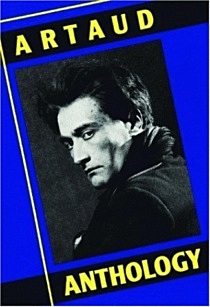 To society, he was a madman. Artaud, however, was not insane, but in luciferian pursuit of what society keeps hidden. The man who wrote Van Gogh the Man Suicided by Society raged against the insanity of social institutions with insight that proves more prescient with every passing year. Today, as Artaud’s vatic thunder still crashes above the “larval confusion” he despised, what is most striking in his writings is an extravagant lucidity.
To society, he was a madman. Artaud, however, was not insane, but in luciferian pursuit of what society keeps hidden. The man who wrote Van Gogh the Man Suicided by Society raged against the insanity of social institutions with insight that proves more prescient with every passing year. Today, as Artaud’s vatic thunder still crashes above the “larval confusion” he despised, what is most striking in his writings is an extravagant lucidity.
This collection gives us quintessential Artaud on the occult, magic, the theater, mind and body, the cosmos, rebellion, and revolution in its deepest sense.
Title Artaud Anthology
Author Antonin Artaud
Edited by Jack Hirschman
Publisher City Lights Publishers
Format: Paperback
Nb of pages 256 p.
First published 1963
ISBN-10 0872860000
ISBN-13 9780872860001
$15.95
# new books
Antonin Artaud
fleursdumal.nl magazine
More in: #Biography Archives, - Book Lovers, Antonin Artaud, Archive A-B, Archive A-B, Art & Literature News, Artaud, Antonin, AUDIO, CINEMA, RADIO & TV, Psychiatric hospitals, THEATRE
Robot love is een interactieve expo experience over de liefde tussen mens en robot. Meer dan 50 kunstenaars, ontwerpers en wetenschappers stellen de vraag of robots in staat zijn tot liefde. En of jij van ze kunt houden.

Wandel door het bijzondere gebouw en ontdek wat jij nu écht voelt, denkt en vindt van de invloed van techniek en innovatie op onze maatschappij. Een groot aantal werken is speciaal voor Robot Love gemaakt.
Robot Love is een grootschalige, internationale expo experience met tentoonstelling, publiek programma, partnerevents, educatieprogramma’s en een Robot Café. Robot Love vindt plaats van 15 september t/m 2 december 2018 in de Melkfabriek op het voormalige Campinaterrein in Eindhoven.
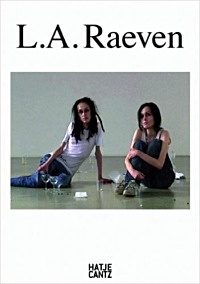 Robot Love zoekt de verbinding tussen mens en robot. Robots en AI als nieuwkomers moeten veel leren en worden opgevoed. Dat vereist aandacht, zorg en bovenal liefde. Om de belofte up close & personal with robots waar te maken zet Robot Love in op het bereiken van een breed en zeer divers publiek.
Robot Love zoekt de verbinding tussen mens en robot. Robots en AI als nieuwkomers moeten veel leren en worden opgevoed. Dat vereist aandacht, zorg en bovenal liefde. Om de belofte up close & personal with robots waar te maken zet Robot Love in op het bereiken van een breed en zeer divers publiek.
Robot Love heeft een optimistische benadering van robotisering en omarmt de komst van robots en AI, juist omdat het ons ook kansen biedt betere mensen te worden. Tegelijk worden ook de minder fraaie consequenties ervan onderzocht. Er is ruimte voor fascinatie, maar ook voor conflict, voor kwetsbaarheid, maar vooral voor liefde. Dat doet Robot Love door de organisatie van een expo experience op het snijvlak van kunst, design en wetenschap.
L.A. Raeven
Annelies, Looking for Completion, 2018, androïde robot
Werk in opdracht van stichting Niet Normaal
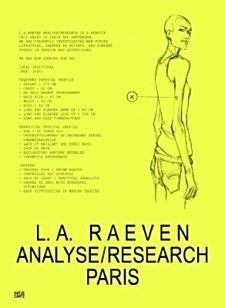 Hoe zou het zijn als je de mogelijkheid hebt om jezelf of je geliefde te kopiëren? Kun je daarmee de angst om verlaten te worden voorkomen? Met het werk Annelies, Looking for Completion, onderzoekt het kunstenaarsduo L.A. Raeven deze en andere vragen door het bouwen van een op henzelf lijkende androïde robot. De tweelingzusjes zijn bekend geworden met hun indringende en persoonlijke werk over maatschappelijke thema’s zoals de vergaande individualisering en het benauwende streven naar perfectie. Ook de ‘gekloonde’ drieling zus Annelies gaat in op deze ontwikkelingen en richt zich op het gevoel van eenzaamheid dat hier vaak uit voortkomt.
Hoe zou het zijn als je de mogelijkheid hebt om jezelf of je geliefde te kopiëren? Kun je daarmee de angst om verlaten te worden voorkomen? Met het werk Annelies, Looking for Completion, onderzoekt het kunstenaarsduo L.A. Raeven deze en andere vragen door het bouwen van een op henzelf lijkende androïde robot. De tweelingzusjes zijn bekend geworden met hun indringende en persoonlijke werk over maatschappelijke thema’s zoals de vergaande individualisering en het benauwende streven naar perfectie. Ook de ‘gekloonde’ drieling zus Annelies gaat in op deze ontwikkelingen en richt zich op het gevoel van eenzaamheid dat hier vaak uit voortkomt.
ROBOT LOVE
The Expo That Gets Under Your Skin
15 Sept – 2 Dec 2018
Di t/m Zo: 11:00 – 18:00
Vr: 11:00 – 21:00, Ma: gesloten
CAMPINA MELKFABRIEK
Kanaaldijk-Zuid t.h.v. nr. 3
EINDHOVEN
Robot Love | 15.09.2018 – 02.12.2018 | Campina Melkfabriek | Kanaaldijk-Zuid | Hugo van der Goeslaan | 5613 LE Eindhoven
# robot love
L.A. Raeven: Annelies,
Looking for Completion, 2018, androïde robot
fleursdumal.nl magazine
More in: - Book News, Archive Q-R, Art & Literature News, Exhibition Archive, FDM Art Gallery, L.A. Raeven, The talk of the town
Stephen Parkers Brecht-Biografie setzt neue Maßstäbe, jubeln die KritikerInnen einstimmig – auch wenn Brecht hier nicht gerade sympathisch daherkommt: Als Heuchler, der anderen den Kommunismus predigte, während er gerissen um seine Honorare feilschte und Grundstücke kaufte; Neidhammel, der andere Künstler schlecht machte und sich selbst lobte; politischen Opportunisten und “sexbesessenen Chauvinisten” lernt FR-Kritiker Wilhelm von Sternburg Brecht kennen, betont aber vor allem die Fairness, die der britische Germanist Stephen Parker dem Dichter in diesem nach der Struktur des klassischen Dramas aufgebauten Tausend-Seiten-Werk angedeihen lässt: An Brechts literarischem Genie hat Parker keine Zweifel.
 In der taz verdankt Ambros Waibel dem Buch ganz neue Einsichten, etwa in Brechts Verhältnis zu seinen Eltern. Parkers umfangreiche Recherche und Empathie für Brechts komplexen Charakter hebt auch Norbert Meyer in der Presse hervor, “Parkers Brecht-Biografie erinnert an die Vermessung eines literarischen Gullivers mit tausend feinen Fäden”, meint Michaela Schmitz im DlF über das faktengesättigte Buch: Dass Parker im Gegensatz zu anderen Biografen Brecht nicht durch die “ideologische Brille” betrachtet, verbucht sie ebenfalls als Gewinn. In der Welt unterhält sich Richard Kämmerlings mit Parker über Brecht.
In der taz verdankt Ambros Waibel dem Buch ganz neue Einsichten, etwa in Brechts Verhältnis zu seinen Eltern. Parkers umfangreiche Recherche und Empathie für Brechts komplexen Charakter hebt auch Norbert Meyer in der Presse hervor, “Parkers Brecht-Biografie erinnert an die Vermessung eines literarischen Gullivers mit tausend feinen Fäden”, meint Michaela Schmitz im DlF über das faktengesättigte Buch: Dass Parker im Gegensatz zu anderen Biografen Brecht nicht durch die “ideologische Brille” betrachtet, verbucht sie ebenfalls als Gewinn. In der Welt unterhält sich Richard Kämmerlings mit Parker über Brecht.
Zum 120. Geburtstag erscheint in deutscher Sprache die endgültige Darstellung von Bertolt Brechts Leben und Werk. Dieses Prädikat hat sich das Buch des englischen Germanisten und hervorragenden Brechtkenners Stephen Parker durch eine Reihe von Vorzügen erworben.
Hier wird zum ersten Mal das gesamte verfügbare Wissen über den Autor und dessen Arbeit dargeboten und zum Erzählen gebracht. Die lebendige und detailgenaue Darstellung eines aufgrund der politischen, persönlichen und literarischen Verhältnisse am Abgrund angesiedelten Lebens – nicht die chronologische Registratur – bilden das hervorstechendste Merkmal. Von außen kommend und mit einem unvoreingenommen neutralen Blick zeichnet Parker ein Bild der verschiedenen Lebensstationen und Schaffensperioden Brechts.
Kenntnisreich vollzieht er die damaligen wie heutigen parteiischen Tendenzen nach, so dass sie in ihrer historischen und literaturhistorischen Konstellation erkennbar werden. Engagement für die Sache und Liebe für das Werk Bertolts Brechts sind Stephen Parkers Antriebskräfte. Sein Enthusiasmus begleitet den Dichter von früh an durch alle Entwicklungen und bringt ihn uns in seiner ganzen Widersprüchlichkeit nahe.
Stephen Parker
Bertolt Brecht – Eine Biographie
Aus dem Englischen von Ulrich Fries und Irmgard Müller
Suhrkamp Verlag
Erschienen: 11.06.2018
Gebunden
1030 Seiten
ISBN: 978-3-518-42812-2
58,00 Euro
# new books
Bertolt Brecht Biographie
fleursdumal.nl magazine
More in: #Biography Archives, - Book News, - Bookstores, Archive A-B, Archive O-P, Art & Literature News, Bertolt Brecht, THEATRE
H. G. Wells was born Herbert George in Bromley, Kent, England, on September 21, 1866. His father was a professional cricketer and sometimes shopkeeper, his mother a former lady’s maid.
 Although “Bertie” left school at fourteen to become a draper’s apprentice (a life he detested), he later won a scholarship to the Normal School of Science in London, where he studied with the famous Thomas Henry Huxley. He began to sell articles and short stories regularly in 1893.
Although “Bertie” left school at fourteen to become a draper’s apprentice (a life he detested), he later won a scholarship to the Normal School of Science in London, where he studied with the famous Thomas Henry Huxley. He began to sell articles and short stories regularly in 1893.
In 1895, his immediately successful novel rescued him from a life of penury on a schoolteacher’s salary. His other “scientific romances”—The Island of Dr. Moreau (1896), The Invisible Man (1897), The War of the Worlds (1898), The First Men in the Moon (1901), and The War in the Air (1908)—won him the distinction as the father of science fiction.
Henry James saw in Wells the most gifted writer of the age, but Wells, having coined the phrase “the war that will end war” to describe World War I, became increasingly disillusioned and focused his attention on educating mankind with his bestselling Outline of History (1920) and his later utopian works. Living until 1946, Wells witnessed a world more terrible than any of his imaginative visions, and he bitterly observed: “Reality has taken a leaf from my book and set itself to supercede me.”
The War of the Worlds (1898) conjures a terrifying, tentacled race of Martians who devastate the Earth and feed on their human victims while their voracious vegetation, the red weed, spreads over the ruined planet. After the novel’s hero finds himself trapped in what is left of London, despairing at the destruction of human civilization, he discovers that life on Earth is more resilient than he had imagined. Adapted by Orson Welles for his notorious 1938 radio drama and subsequently by many filmmakers, H. G. Wells’s timeless story shows no sign of losing its grip on readers’ imaginations.
The War of the Worlds
By H.G. Wells
Category: Science Fiction
Paperback
Nov 06, 2018
192 Pages
$8.00
Published by Vintage
ISBN 9780525564164
# Books That Everyone Should Read
fleursdumal.nl magazine
More in: - Book Lovers, - Book News, Archive W-X, AUDIO, CINEMA, RADIO & TV, H.G. Wells, Tales of Mystery & Imagination, Wells, H.G.
Sinds de vertaling van Marko Fondse van Majakovski’s werken uitkwam, vijfentwintig jaar geleden, is diens poëzie niet meer weg te denken uit de Nederlandse boekhandel. De ongeëvenaarde lenigheid van de taal die Fondse wist aan te boren zette de dichter hier voorgoed op de kaart.
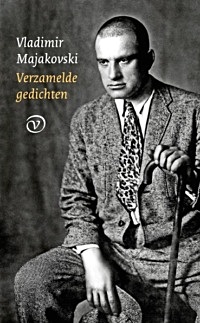 Met de ge-update versie van de poëzie van Majakovski zijn zijn beroemde poèma’s en andere gedichten nu weer beschikbaar. Het bekende Een wolk in broek en Mens, die dateren van voor de revolutie van 1917, laten de gepassioneerde (liefdes)dichter in optima forma zien. De grote gedichten Ik heb lief en Daarover, van na de revolutie, zijn twee positieve uitzonderingen op de socialistische poëzie waaraan Majakovski zijn dichterschap ten slotte offerde: daarin keert de bravoure van zijn vroege lyriek even terug.
Met de ge-update versie van de poëzie van Majakovski zijn zijn beroemde poèma’s en andere gedichten nu weer beschikbaar. Het bekende Een wolk in broek en Mens, die dateren van voor de revolutie van 1917, laten de gepassioneerde (liefdes)dichter in optima forma zien. De grote gedichten Ik heb lief en Daarover, van na de revolutie, zijn twee positieve uitzonderingen op de socialistische poëzie waaraan Majakovski zijn dichterschap ten slotte offerde: daarin keert de bravoure van zijn vroege lyriek even terug.
Deze uitgave van Majakovski’s poëzie is voor de gelegenheid aangevuld met een grote hoeveelheid gedichten uit zijn enorme oeuvre. Vele daarvan verschenen niet eerder in Nederlandse vertaling. De herziening en uitbreiding zijn in handen van Majakovski-vertaler Yolanda Bloemen.
Alles waarvoor de dichter Vladimir Majakovski (1893–1930) hartstochtelijk leefde en werkte, de revolutie en de opbouw van het socialisme, is een eeuw na zijn geboorte grondig in diskrediet geraakt en ineengestort. Naar Majakovski’s socialistische poëzie kijkt bijna geen mens meer om. Wel wordt zijn voorrevolutionaire werk nog gelezen: de gedichten van Een wolk in broek tot en met Mens, een ding, met hun unieke mixtuur van lyrische, epische en dramatische kwaliteiten. Na 1917 wist Majakovski zich nog twee maal van zijn socialistische preoccupaties los te maken in de twee grote poëma’s Ik heb lief en Daarover (1921-1923).
Auteur: Vladimir Majakovski
Titel: Verzamelde gedichten
Vertalingen: Marko Fondse, Yolanda Bloemen e.a.
Taal: Nederlands
Uitgever: Uitgeverij van Oorschot
Bindwijze: Paperback
Verschijningsdatum: september 2018
Druk: 1e druk
Afmetingen: 21 x 13 x 2,9 cm
Aantal pagina’s: 480
ISBN-13 9789028280915
ISBN-10 902828091X
€ 29,99
# new poetry translations
Vladimir Majakovski
fleursdumal.nl magazine
More in: - Book Lovers, - Book News, Archive M-N, Archive M-N, Art & Literature News, Constructivism, Constuctivisme, Majakovsky, Vladimir, TRANSLATION ARCHIVE
Heel 2017 schreef Cyrille Offermans aan wat je nog het beste zou kunnen omschrijven als een intellectueel journaal: een verzameling notities, beschouwingen, herinneringen, observaties en essayistische commentaren op gelezen boeken en gebeurtenissen in de wereld.
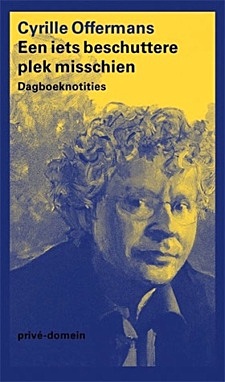 Dat de barre werkelijkheid voortdurend zijn plaats op de voorgrond opeist, zegt genoeg over onze tijd. Het boek (en dus het jaar) begint en eindigt met de doffe ellende in Syrië.
Dat de barre werkelijkheid voortdurend zijn plaats op de voorgrond opeist, zegt genoeg over onze tijd. Het boek (en dus het jaar) begint en eindigt met de doffe ellende in Syrië.
Daartussen presenteert zich een baaierd aan onderwerpen – van de Franse verkiezingen en de afnemende tekenvaardigheid van de schooljeugd tot en met uiteenzettingen over bibliomanie, de betekenis van carnaval, de eerste woordjes van een kleinkind of de ziekte van een vriendin.
Er is alles in de wereld. En er is alles in dit boek.
Cyrille Offermans (Geleen, 8 april 1945) is een Nederlandse schrijver, essayist en criticus. Hij publiceert met name in De Groene Amsterdammer, Vrij Nederland, De Standaard en Raster. Bij het laatste literair tijdschrift werkte hij tevens als redacteur. Hij publiceerde meer dan twintig boeken in uiteenlopende genres, vooral essayistiek in het grensgebied van literatuur, filosofie, cultuurgeschiedenis en politiek. Zijn werk werd diverse malen met prestigieuze prijzen bekroond.
Cyrille Offermans
Een iets beschuttere plek misschien
Dagboeknotities
Uitgeverij De Arbeiderspers
Privé-domein – Paperback
Publicatiedatum: 25-09-2018
ISBN: 9789029525794
NUR: 321
€ 25,99
# new books
cyrille offermans
fleursdumal.nl magazine
More in: - Book Lovers, - Book News, - Book Stories, Archive O-P, Art & Literature News, Art Criticism, AUDIO, CINEMA, RADIO & TV, LITERARY MAGAZINES, MONTAIGNE
‘None of us has ever read anything like this before. Anna Burns’ utterly distinctive voice challenges conventional thinking and form in surprising and immersive prose. It is a story of brutality, sexual encroachment and resistance threaded with mordant humour. Set in a society divided against itself, Milkman explores the insidious forms oppression can take in everyday life.’ Kwame Anthony Appiah, 2018 Chair of Judges
 Set in an un-named city but with an astonishing, breath-shorteningly palpable sense of time and place Milkman is a tale of gossip and hearsay, silence and deliberate deafness. The story of inaction with enormous consequences and decisions that are never made, but for which people are judged and punished.
Set in an un-named city but with an astonishing, breath-shorteningly palpable sense of time and place Milkman is a tale of gossip and hearsay, silence and deliberate deafness. The story of inaction with enormous consequences and decisions that are never made, but for which people are judged and punished.
Middle sister is our protagonist. She is busy attempting to keep her mother from discovering her nearly-boyfriend and to keep everyone in the dark about her encounter with milkman (which she herself for the life of her cannot work out how it came about). But when first brother-in-law, who of course had sniffed it out, told his wife, her first sister, to tell her mother to come and have a talk with her, middle sister becomes ‘interesting’. The last thing she ever wanted to be. To be interesting is to be noticed and to be noticed is dangerous.
Milkman is a searingly honest novel told in prose that is as precise and unsentimental as it is devastating and brutal. A novel that is at once unlocated and profoundly tethered to place is surely a novel for our times.
Anna Burns was born in Belfast, Northern Ireland. She is the author of two novels, No Bones and Little Constructions, and of the novella, Mostly Hero. No Bones won the Winifred Holtby Memorial Prize and was short-listed for the Orange Prize for Fiction. She lives in East Sussex, England.
Milkman
by Anna Burns
Fiction
Language: English
Publisher: Faber & Faber
Imprint: Faber Fiction
2018
360 pages
Paperback
ISBN-10: 9780571338757
ISBN-13: 978-0571338757
Awards: Man Booker Prize 2018 UK
# new fiction
man booker prize 2018
fleursdumal.nl magazine
More in: - Book Lovers, - Book News, Archive A-B, Art & Literature News, Awards & Prizes, Literary Events
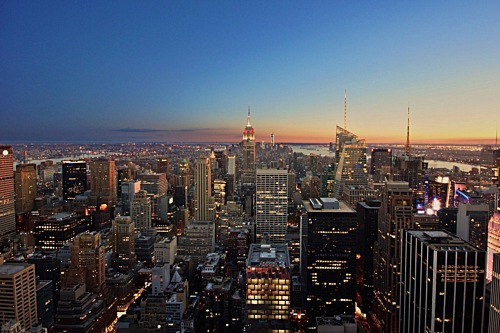
Hans Hermans© photos: landscape
(102 – new york usa)
# more on website hans hermans photos
fleursdumal.nl magazine
More in: FDM Art Gallery, Hans Hermans Photos, Photography
The Poetry Deal is the first full-length collection of individual poems in decades from legendary feminist Beat poet, Diane di Prima.
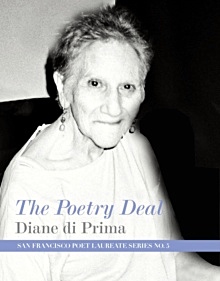 Framed by two passionate, and critical, prose statements assessing her adopted home city, The Poetry Deal is a collection of poems that provide a personal and political look at 40 years of Bay Area culture. Often elegiac in tone, the book captures the poet’s sense of loss as she chronicles the deaths of friends from the AIDS epidemic as well as the passing of illustrious countercultural colleagues like Philip Whalen, Pigpen from the Grateful Dead, and Kirby Doyle.
Framed by two passionate, and critical, prose statements assessing her adopted home city, The Poetry Deal is a collection of poems that provide a personal and political look at 40 years of Bay Area culture. Often elegiac in tone, the book captures the poet’s sense of loss as she chronicles the deaths of friends from the AIDS epidemic as well as the passing of illustrious countercultural colleagues like Philip Whalen, Pigpen from the Grateful Dead, and Kirby Doyle.
She also recalls and mourns out-of-town inspirations like Chogyam Trungpa Rinpoche, Audre Lorde, and Ezra Pound. Yet even as she laments the state of her city today, she finds triumph and solace in her own relationships, the marriages of her friends, the endurance of City Lights, and other symbols of San Francisco’s heritage.
Born in Brooklyn in 1934, di Prima emerged as a member of the Beat Generation in New York in the late ’50s; in the early ’60s, she founded the important mimeo magazine, The Floating Bear, with her lover LeRoi Jones (Amiri Baraka). In the late ’60s, she moved to San Francisco, where she would publish her groundbreaking Revolutionary Letters (1971) with City Lights. Her other important books include Memoirs of a Beatnik, Pieces of a Dream, Recollections of My Life as a Woman, and Loba. She was named San Francisco Poet Laureate in 2009.
“The Poetry Deal is fresh flame from a revolutionary fire that continues to burn. Every woman of every age should carry it in a purse with their pepper spray. Diane is the ultimate weapon.”—Amber Tamblyn, author of Dark Sparkler
Title The Poetry Deal
Subtitle San Francisco Poet Laureate Series No. 5
Author Diane di Prima
Collection San Francisco Poet Laureates
Publisher City Lights Publishers
Publication 2014
Format Paperback
ISBN-10 1931404151
ISBN-13 9781931404150
pages 120
Price $11.95
# new books
Diane di Prima poet
fleursdumal.nl magazine
More in: #Beat Generation Archives, - Book Lovers, - Book News, Archive O-P, Archive O-P, Art & Literature News
Vivid stories from one of Turkey’s most admired contemporary female authors, whose political activism has made her the target of state persecution.
 Three interconnected stories feature women whose lives have been interrupted by forces beyond their control. Exile, serious illness, or the imprisonment of one’s beloved are each met with versions of strength and daring, while there is no undoing what fate has wrought. These atmospheric, introspective tales culminate in an experimental, multi-voiced novella, whose “stone building” is a metaphor for the various oppressive institutions—prisons, police HQs, hospitals and psychiatric asylums—that dominate the lives of all of these characters. Here is a literary distillation of the alienation, helplessness, and controlled fury of exile and incarceration—both physical and mental—presented in a series of moving, allegorical portraits of lives ensnared by the structures of power.
Three interconnected stories feature women whose lives have been interrupted by forces beyond their control. Exile, serious illness, or the imprisonment of one’s beloved are each met with versions of strength and daring, while there is no undoing what fate has wrought. These atmospheric, introspective tales culminate in an experimental, multi-voiced novella, whose “stone building” is a metaphor for the various oppressive institutions—prisons, police HQs, hospitals and psychiatric asylums—that dominate the lives of all of these characters. Here is a literary distillation of the alienation, helplessness, and controlled fury of exile and incarceration—both physical and mental—presented in a series of moving, allegorical portraits of lives ensnared by the structures of power.
Aslı Erdoğan (Istanbul, 1967) is a renowned, prize-winning author, journalist, and human rights activist whose fiction has been translated into many languages. She has published novels, collections of short stories and poetic prose, and selections from her political essays. As a journalist, she has covered controversial topics such as state violence, discrimination, and human rights, for which she has been persecuted in a variety of ways.
Erdogan was imprisoned for four months by the Turkish government in a sweeping roundup of dissident voices after the failed coup attempt of July 2016. The subject of both PEN International and PEN America advocacy campaigns, she was released from prison in late December 2016.
This is her second work to be translated into English.
“Aslı Erdoğan is an exceptionally perceptive and sensitive writer who always produces perfect literary texts.”—Orhan Pamuk, author of The Red-Haired Woman
Title The Stone Building and Other Places
Author Aslı Erdoğan
Translated by Sevinç Türkkan
Publisher City Lights Publishers
literature in translation
Title First Published 27 February 2018
Format Paperback
ISBN-10 0872867501
ISBN-13 9780872867505
Publication Date 27 February 2018
Main content page count 174
List Price $15.95
# new novel
Aslı Erdoğan
fleursdumal.nl magazine
More in: - Book News, - Book Stories, Archive E-F, Ivo van Leeuwen, PRESS & PUBLISHING, REPRESSION OF WRITERS, JOURNALISTS & ARTISTS
Voor ze naar binnen gaan, plukken ze dikke ijspegels van het afdakje boven de deur, om op te sabbelen.
 Binnen maken ze een vuurtje van houtblokken. Als het een beetje warm is, trekken Mels en Tijger hun schoenen en sokken uit om ze bij het vuur te drogen. Hun tenen zijn zo wit als die van hun grootmoeder toen ze opgebaard lag en haar voeten net iets onder het laken uit staken. Mels had het niet kunnen laten om er even in te knijpen. Hij weet zeker dat ze even de ogen opende en dat ze heel zacht `au’ had gezegd. Zijn grootmoeder hield van grapjes, daaraan kon de dood niets veranderen. Maar van zijn vader had hij een draai om zijn oren gekregen.
Binnen maken ze een vuurtje van houtblokken. Als het een beetje warm is, trekken Mels en Tijger hun schoenen en sokken uit om ze bij het vuur te drogen. Hun tenen zijn zo wit als die van hun grootmoeder toen ze opgebaard lag en haar voeten net iets onder het laken uit staken. Mels had het niet kunnen laten om er even in te knijpen. Hij weet zeker dat ze even de ogen opende en dat ze heel zacht `au’ had gezegd. Zijn grootmoeder hield van grapjes, daaraan kon de dood niets veranderen. Maar van zijn vader had hij een draai om zijn oren gekregen.
Daardoor weet Mels het nog. Veel meer dan dat voorval heeft hij niet van haar onthouden: hij was nog klein toen ze doodging. Ze kennen haar vooral uit de verhalen van grootvader Bernhard. En ze weten dat ze van paarse viooltjes hield, want hij zorgt ervoor dat haar graf altijd vol paarse viooltjes staat.
`Ik zal jullie voeten warmen’, zegt Thija. Ze wrijft hun tenen warm met sneeuw, net zo lang tot ze gloeien als ijzer in smidsvuur. Ondertussen vertelt ze over de winter in China, waar het heel gewoon is dat de sneeuw zo hoog ligt dat de mensen er tunnels in aanleggen en de dorpen in de winter op vestingen lijken, met daken van ijs waar de zon doorheen schijnt.
`Er was eens een meisje in China dat in een gevangenis zat’, begint Thija.
`Waarom?’
`Omdat haar moeder niet van haar hield. Ze zat niet in een echte gevangenis, voor haar gevoel was het zo. Om lief voor haar moeder te zijn, plukte ze bloemen. Maar toen ze de bloemen aan haar moeder gaf, vond die de kleur niet mooi. Toen bakte ze een taart voor haar moeder, maar die lustte de taart niet omdat ze in plaats van suiker per ongeluk zout had gebruikt. Een lieve moeder had tegen haar kind gezegd: “O, wat heb jij een lekkere taart gebakken. Geef me nog maar een stukje.” Maar in haar zenuwachtigheid deed het meisje alles fout. Op een keer, toen haar moeder weer tegen haar schreeuwde, werd het meisje heel boos. Toen haar moeder sliep, pakte ze het taartmes en sneed haar het hoofd af. Ze stopte het in een taartdoos en stuurde het naar de keizer, omdat de keizer oud en alleen en blind en een beetje zielig was. Ze dacht: Als hij de doos opent en het haar van mijn moeder voelt, vindt hij er misschien troost in door het te strelen. Zo was haar moeder dan toch nog ergens goed voor. De rest van het lichaam sneed ze in stukken en gooide die in zee.’
`En toen?’
`Dit is alles.’
`Dit verhaal is niet af’, zegt Mels. `Krijgt ze straf? Wordt die moeder weer heel en krijgt ze dan spijt?’
`Vertel jij het verhaal maar verder.’
`Goed. Op een dag toen de keizer het haar van de moeder zat te strelen, merkte hij dat het alleen een hoofd was. Dat deed hem verdriet. Hij wilde het hele lichaam van de vrouw kunnen strelen. Hij liet in het land omroepen dat wie hem het lichaam van de vrouw bracht, een beloning zou krijgen.
Op een dag vonden een paar vissers de stukken van het lichaam in hun netten. Ze brachten ze naar de keizer. Die was blij. Vurig wenste hij dat de vrouw weer tot leven kwam. Maar toen de keizerlijke dokters haar in elkaar aan het zetten waren, ontdekten ze dat ze geen hart had. Daarom gaven ze haar het hart van een slang. Ze begon weer te leven. De vrouw was verbaasd toen ze zichzelf in de armen van de keizer terugvond.’
`En toen?’ vraagt Tijger.
`Dan is het verhaal afgelopen.’
`Dat kan niet. Ik weet hoe het verdergaat. De vrouw wil zich wreken op haar dochter. En ze is sluw omdat ze nu het hart heeft van een slang. Op een nacht glijdt ze, in de gedaante van een slang, het huis van haar dochter binnen en probeert haar te wurgen. Maar de dochter herkent haar aan haar ogen. Die zijn nog altijd even vals. Nu kan haar moeder haar slangengedaante niet meer afleggen, want wie in valse vermomming herkend wordt, moet voor altijd in die gedaante blijven huizen en kan nooit meer zichzelf worden. De moeder vlucht naar het bos. Daar woont ze nu nog, als een gevaarlijke slang. Alle kinderen die in het bos komen, eet ze op.’
Zo is het genoeg’, zegt Thija. `Zwarte sprookjes eindigen altijd met opgegeten kinderen.’
De schoenen en sokken zijn weer droog. Het vuur is al bijna uit. Ze gooien een paar emmers sneeuw op de nog gloeiende as die sissend protesteert, alsof de duivel zelf zich in de resten van het vuur ligt te warmen.
Ze gaan naar de zolder. Het raampje van de molenzolder is wit van de sneeuw. De binnenkant van het glas is geëtst met ijsbloemen die lijken op het suikerwerk op een abrikozenvlaai.
Het is alsof ze onder een stolp zitten. Om elkaar te verstaan is fluisteren meer dan genoeg. Hun stemmen komen met wolkjes uit hun mond. De woorden bevriezen bijna op hun lippen, de letters vallen als spelden zo zacht op de vloer, maar maken toch nog genoeg geluid om elkaar onder deze stolp van stilte te kunnen verstaan.
Tijger blaast zijn handen warm. Het klinkt oorverdovend luid.
`Stil’, zegt Thija. `We zijn hier om te luisteren naar de stilte.’
Ze durven bijna niet meer te ademen.
Plotseling horen ze een kreet. Ver weg. Het is net alsof hij over een enorme vlakte naar hen toe komt.
`Dat is iemand die bang is’, zegt Thija.
`Het is die zigeunerjongen’, zegt Mels. `Jacob.’
`Is hij dan nog niet dood?’
`Hij zit in die wagen om beter te worden. Hij roept zo hard omdat hij alleen is. Het is mijn schuld. Ik heb beloofd dat ik terugkwam.’
`Dan gaan we nu’, zegt Thija.
Ze verlaten de stille stolp van de molen en lopen langs de Wijer het dorp uit.
Door het dikke zuigende pak sneeuw duurt de tocht eindeloos lang.
De woonwagens en de kleine keet staan nog steeds op dezelfde plaats, aan het eind van een bosweg.
Iemand tikt op het beslagen raam van het keetje. Ze moeten goed kijken. Het is Jacob.
`Ik dacht dat je me vergeten was’, roept hij.
`We konden je tot in het dorp horen roepen’, zegt Mels. `Als het koud is, draagt een stem heel ver.’
`Ik was even buiten’, zegt de jongen. `Om door de sneeuw te lopen. Ik geloof niet dat ik beter word door in dit hok te blijven zitten. Daarom schreeuwde ik zo hard. Niet van kwaadheid, hoor. Van blijdschap omdat ik de sneeuw voelde.’
Jacobs moeder komt uit haar woonwagen naar buiten. Ze kennen haar goed. Mels’ moeder heeft zeker al twintig vingerhoeden van haar gekocht, maar ze gebruikt er nooit een. Ze zien Jacobs vader achter de ruit zitten, zijn hoofd in de rook van een sigaret.
`Ik ben blij dat jullie Jacob opzoeken’, zegt ze.
`Hoelang is hij al ziek?’
`Al heel lang. Kom even binnen, ik heb thee.’
In de wagen moeten ze zich voorzichtig bewegen om de porseleinen engelen en adelaars en de kristallen vazen niet om te stoten. De wagen staat propvol.
Ze drinken thee.
`Het gaat niet goed met Jacob’, zegt zijn moeder. `Ik zeg het eerlijk, het is een wonder dat hij nog leeft. Hij wil niet dood. Misschien haalt hij de lente. Dan kan het nog lang duren.’
Jacobs vader zucht, inhaleert diep en blaast de rook uit in kringetjes.
`Als hij niet beter wordt, dan mag hij toch wel uit dat keetje?’ vraagt Mels.
`Als we tegen hem zeggen dat hij eruit mag, weet hij dat het afgelopen is.’
`Dank u voor de thee’, zegt Mels. `We willen nu graag naar Jacob.’
Jacobs vader dooft de sigaret, kijkt hen een voor een aan, lijkt iets te willen zeggen, slikt, alsof hij een brok in zijn keel heeft, zegt niets en rolt een nieuwe sigaret.
Door de sneeuw lopen ze terug naar de kleine wagen.
Jacob nodigt hen naar binnen. Dat mag nu dus ook.
In de wagen ruikt het naar schoonmaakmiddelen. Zijn het de medicijnen die zijn longen beter moeten maken?
Jacob zit op het bed. Zijn gezicht is wit als sneeuw.
`Zien zieke kinderen er allemaal zo uit als ik?’ vraagt hij.
`Als je beter bent, krijg je net zo’n rode kleur van de kou als wij’, zegt Mels. `Straks, als je weer naar school gaat.’
`Op scholen houden ze niet van zigeuners.’
`Bij ons wel’, zegt Mels. `We hebben ook een meisje uit China in de klas.’
`Zij?’ Jacob kijkt naar Thija.
`Als je van verhalen houdt, kun je vriend van ons worden’, zegt Thija.
`Zigeuners kennen veel verhalen’, zegt Jacob. Hij vertelt over hoe de zigeuners door de eeuwen heen door de Kaukasus trokken en door Europa en ten slotte hier zijn aangekomen. Hij heeft een boek over de lange reis. Het staat vol platen. Zigeuners op feesten. Dansende meisjes met wijde rokken. Kampvuren. Vrouwen die levende egels opblazen door ze een strootje in hun gat te steken, ze in klei rollen en ze levend in het vuur roosteren.
`Bah, dat jullie egels eten’, zegt Mels.
Jacob zwijgt. Hij is moe. Ze staan op.
`Komen jullie weer terug?’
`Zeker’, zegt Mels.
Zachtjes gaan ze naar buiten. De sneeuw lijkt nu nog witter. Hij knarst onder hun voeten.
Zwijgend lopen ze terug naar huis.
`Raar dat Jacob blauwe ogen heeft’, zegt Thija. `En blond haar.’
`Zou het dan toch waar zijn dat zigeuners kinderen roven?’ vraagt Tijger.
`Er zijn ook blonde Chinezen’, zegt Thija.
`Bestaat niet.’
`Wel. Afstammelingen van gestrande scheepsbemanningen. En van Marco Polo. Die kreeg honderd vrouwen van de keizer.’
`Als je in de Middeleeuwen een zigeuner doodsloeg kreeg je een beloning’, zegt Mels.
`Veel?’ vraagt Tijger.
`Als je een gezin uitmoordde was je rijk. Dan kon je een kasteel kopen.’
`Jammer dat we niet in de Middeleeuwen leven’, zegt Tijger. `Dan hadden we genoeg geld om naar China te vliegen.’
Thija kijkt hem verbijsterd aan.
`Natuurlijk hadden we hen dan doodgeslagen’, zegt Tijger. `Als we toen hadden geleefd, hadden wij ook gedacht als middeleeuwers.’
Ton van Reen: Het diepste blauw (075)
wordt vervolgd
fleursdumal.nl magazine
More in: - Book News, - Het diepste blauw, Archive Q-R, Reen, Ton van
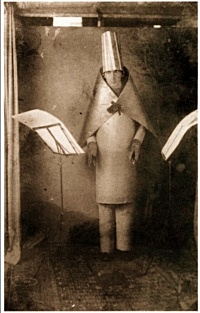
1 Stern und 7 kazamogipuffel
1 Stern und 7 kazamogipuffel
macht 13 zakopaddogei
zubtrahiere 5 franschöse Männlin
macht 1 Libanotterbett
nehme 3 Quentlin Klotzpulfer
legs in himmelsdeifelsnamen
dabei, wirst sehen wohinst
kommst wnr bällt wnr heult
wnr pfaucht wnre Daugen däht
Hugo Ball
(1886-1927)
gedicht
fleursdumal.nl magazine
More in: Archive A-B, Ball, Hugo, Dada, DADA, Dadaïsme
Thank you for reading Fleurs du Mal - magazine for art & literature